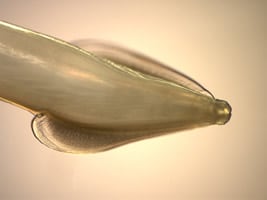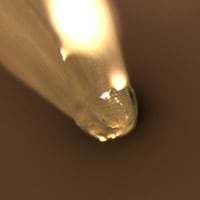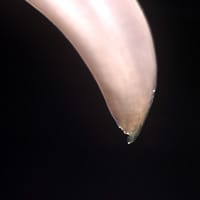
Monthy Case Studies - 2003
Case #103 - March, 2003
A 17-month-old girl was taken to the emergency room of a local hospital after vomiting a worm. The mother of the child told the attending physician that the child had intermittent diarrhea and some weight loss during the last few weeks. She was presumptively treated for ascariasis. Since her family owned two cats and the child had access to the litter box, her parents were advised to have the cats checked by a veterinarian. The images below are pictures of the worm from the girl. The worm was approximately 5 cm in length. What is your diagnosis? Based on what criteria?

Figure A

Figure B

Figure C
Answer to Case #103
This was a case of toxocariasis caused by Toxocara cati. Diagnostic features observed included:
- the size of the adule worm, which was consistent with T. cati.
- the presence of three lips, characteristic of ascarid worms.
- large cervical alae with striations. The alae in T. cati are broad and arrow-shaped, whereas those in T. canis are more narrow and not as strikingly flared at the distal end.
- a prominent point on tail.
Toxocara cati and Toxocara canis are nematodes whose adult forms occur in the small intestines of cats and dogs, respectively. Children sometimes become infected with Toxocara sp. if they ingest embryonated eggs (e.g., eggs containing infective-stage larvae) through contact with soil or other materials contaminated with dog or cat feces. If infective eggs are ingested, they can develop a larva migrans syndrome in which the larvae do not proceed to development of adult worms. It is thought that in situations where an immature or adult worm is vomited/excreted, the patient may have ingested the worm itself rather than infective eggs (spurious passage).
More on: Toxocariasis
Images presented in the monthly case studies are from specimens submitted for diagnosis or archiving. On rare occasions, clinical histories given may be partly fictitious.
 ShareCompartir
ShareCompartir


